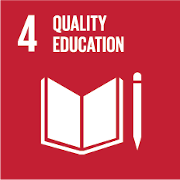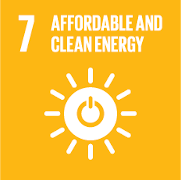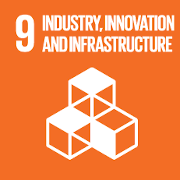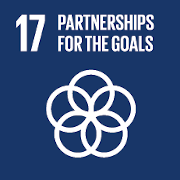Institute of Physics Sustainability Influence
Sustainable development is development that meets the needs of the
present without compromising the ability of future generations to meet
their own need.
The sentence above, taken from the 1987 WCED report - Our Common Future, summarizes the concept of sustainable development expressed in seventeen points. Institute of Physics of the Lodz University of Technology actively pursues the goals of sustainable development in five areas.

Ensure
healthy lives and promote well-being for all at all ages
The project "Physico-chemical mechanisms of the influence of selected metal ions, the source of which is human environment on nucleation and crystallization of selected components of infectious urinary stones" implemented in cooperation with Jan Długosz University in Częstochowa. The project aims to answer the question whether metal ions originating from the environment in which humans live in highly developed countries (polluted air and water, dietary supplements, highly processed food, chemicals in households) may be a factor associated with the increasing incidence of infectious urinary stones in these countries.

Ensure inclusive and equitable quality education and promote lifelong learning opportunities for all
Institute
of Physics of the Lodz University of Technology takes an active part
in providing high-quality education.
For
primary schools, it was a co-implementer of the following ministerial
projects: MEGAFON - Mega Fajne Odkrycia Naukowe 2016-2017 and the
University of Young Explorers 2018-2020.
For
high school students, since 2018, it has been implementing the
project: Academic Center for Especially Gifted Youth of the Lodz
University of Technology which aims to provide all girls and boys
with equal access to high-quality technical education and to
encourage young people to undertake technical studies .
As
part of the patronage over schools, laboratories in physics and
lectures illustrated with demonstrations are being conducted. IF
also supports the preparation of the young for the National Physics
Olympiad by providing its laboratories and consultinons with research
workers.

Ensure access to affordable, reliable, sustainable and modern energy for all
Project: "VCSELs as energy-efficient sources of coherent light". VCSELs are coherent light sources that enable the lowest energy consumption of all known types of lasers. This is one of the main reasons for their large-scale deployment. Due to the extremely fast-growing 3D sensing industry, which also includes face and gesture recognition, proximity sensing as well as the development of telecommunication, the production of VCSELs is expected to reach 3.3 billion units in 2023 (CAGR 2017-2023). Assuming that emitted optical power of all lasers used worldwide in various applications ranges from 3 mW (for short distance communication) to 40 W (used for LIDAR applications) the total energy consumption of VCSELs in 2030 will amount to 5 TWh per year. Assuming that the production of 1 kWh in the EU emits an average of 300 g of CO2 (800 g CO2 / kWh in Poland while 600 g CO2 / kWh in China and 400 g CO2 / kWh in the USA according to Energy Revolution: A Global Outlook, Drax 2018), then the reduction of energy consumption by VCSELs for example by only 20% corresponds to the reduction of CO2 emissions by 3*108 tons per year. This is the amount of CO2 produced by 200 thousand cars per year. The estimates are purely exemplary and cannot be strictly treated. However, they suggest the scale of the problem that we face staying at the edge of photonic era and show the importance of the research.

Build resilient infrastructure, promote inclusive and sustainable industrialization and foster innovation
Innovative materials for the industry: mainly new organic composites based on liquid crystal epoxy networks modified with nanofillers for improved thermal conductivity and elastic properties (a series of recent publications).

Strengthen
the means of implementation and revitalize the global partnership for
sustainable development
Building
up scientific capability through international scientific
collaboration and joint organizational activities, such as being a
member of Editorial
Board in an international scientific journal (
Materials,
impact factor 3.057).
Partnership
in international projects and centres of excellence. E.g. Targeting
Real chemical accuracy at the EXascale (TREX), „A Novel Transparent
Electrodes for VCSELs" (M-Era.Net).
Partnership
in a regional project ‘Pathway for Mazowsze’: ‘The technology
of the production of innovative
epitaxial structures and VCSELs” as part of the national
programme’.
Informal
cooperation e.g. with Vrije Universiteit Brussel (Belgium), Technishe
Universitat Berlin (Germany), Laboratoire d'Analyse et d'Architecture
des Systèmes CNRS (France).


